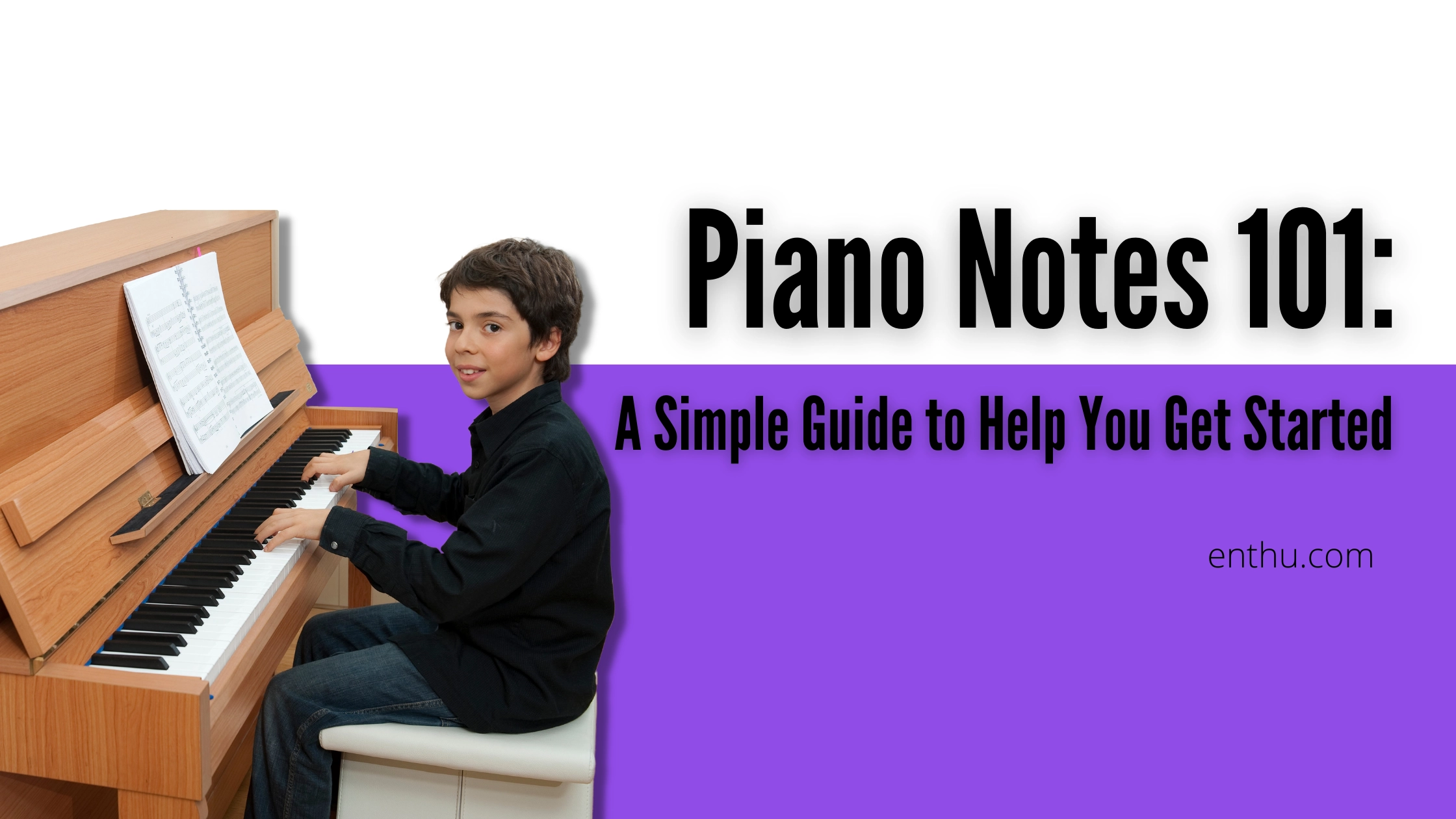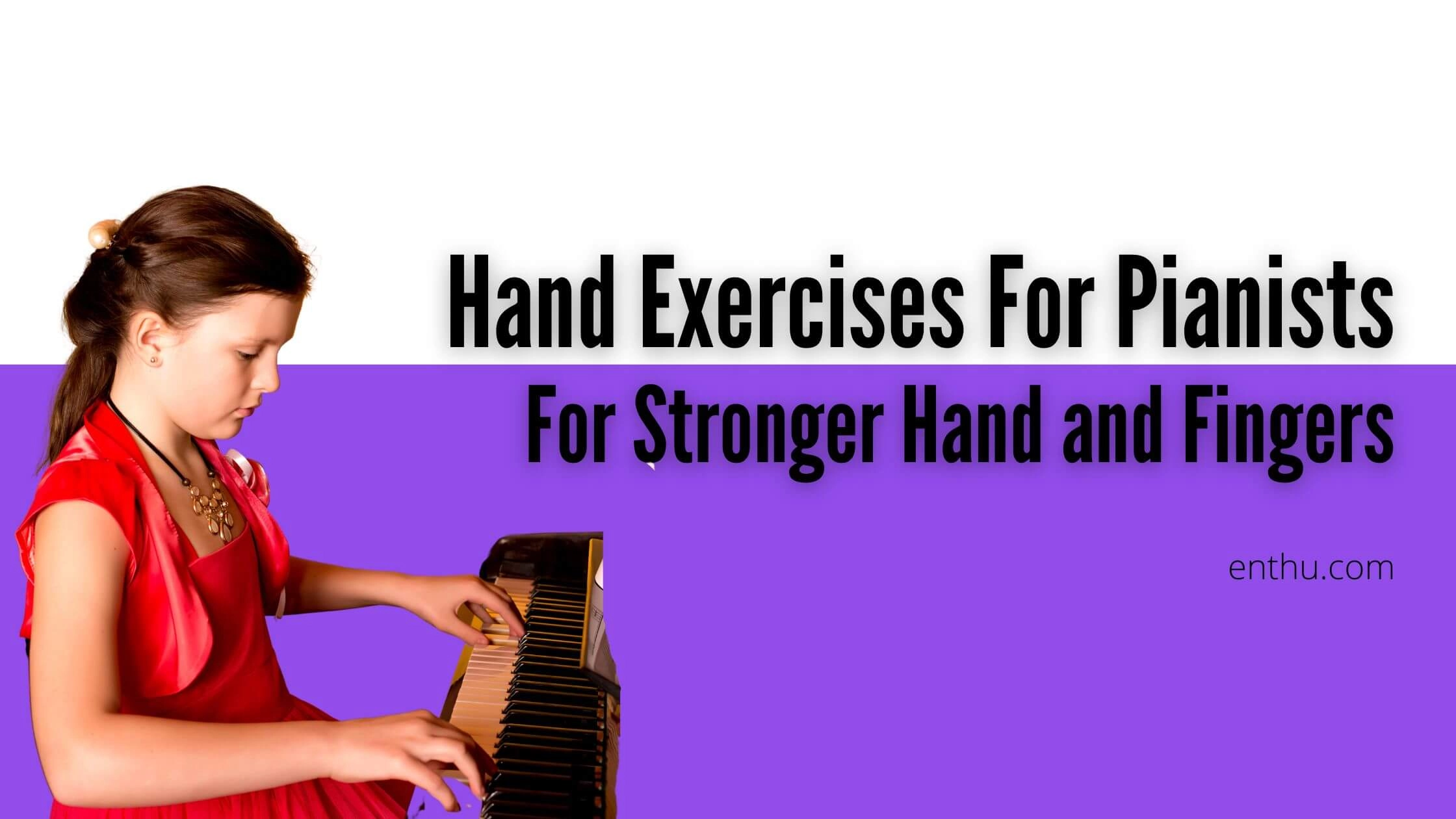"Why should I practice finger exercises?" you might wonder. The answer is simple- musicians require strong muscular control, much like sportspeople do.
And, what is a better way to develop stronger hands and fingers than practicing appropriate hand exercises?
Even world-class pianists prefer to carry out hand exercises before their significant concerts. Playing a few notes on the piano is a simple task.

But, if you want to go at it, you must develop stronger muscle memory, controlled wrist movement, and finger independence.
Before playing like the Beatles or Beethoven, you must try these hand exercises for pianists to improve your posture.

You might feel some discomfort initially, but you will keep the skills forever!
- What Constitutes a Good Exercise for Hands and Fingers?
- Benefits of Hand Exercises for Pianists
- 4 Hand Exercises for Pianists
- When Should You Do Hand Exercises?
- Common Mistakes in Warm-up Exercises
- Conclusion
- FAQs

What Constitutes a Good Exercise for Hands and Fingers?
Before getting into the crux of the article, we should first get a clear idea of the exercises that are good for stronger hands and fingers. Playing melodic piano music is all about the smooth and gliding movement of your fingers across the keys.
Therefore, piano exercises should come from playing with your fingers. Think about your fingers as the primary driving source of power! Mind you, not hands! Not wrists! But fingers! As a beginner or a self-taught pianist, do you feel you cannot play the piano rapidly?
When playing, do you move your hands on the keyboard instead of the tip of your finger?
It is time to unlearn specific techniques preventing you from playing the best piece of your life.
Remember these three tips before playing on the piano
Fingers should be balanced. The only exception here is the pinky finger, which can sometimes be straightened.
Bend your fingers slightly at the knuckles because that will help you to play with your fingertips.
Your arm, elbow, and shoulder should be relaxed.
Benefits of Hand Exercises for Pianists
You can only play like Beethoven if you try to improve your skills. Remember, there are no shortcuts to success!

Now, let us look at the benefits of hand exercises for stronger hands and fingers: Flexibility:
Your fingers will develop a certain flexibility that will loosen your finger muscles for a smoother playing experience.
Dexterity: With the help of your agile finger movements, you can play any scale or note most accurately.
Control: Finger movements on the keyboard should be controlled and measured to incorporate the trills and hand-overs that good music deserves.
4 Hand Exercises for Pianists
For Stronger Hands and Fingers Practice these exercises every day and see the result for yourself.
1. Finger drills
Did you know that Theodor Leschetizky popularized the idea of reading sheet music on the lap rather than in front of the piano?
He believes it is a more straightforward method, especially for beginners who have yet to develop their muscle memory to play without looking at the keys.
Extending his idea a little further, playing the piano can also be practiced away from the instrument. Sounds weird? Let me explain.
How to do finger drills?
Find a flat surface. A dining room table, a subway train's window, or a copy machine
Imagine that flat surface as your piano. Place your hands on the flat surface and play your piano as you would generally
Tips to remember
Pay attention specifically to the motion of each finger
Mix and match several playing sequences
Try to play with both your left and right hands simultaneously
Benefits
Independent finger drills work great to improve finger strength and coordination.
2. Pentatonic scale practice
Pentatonic Scale Warm-Up
When you play five notes of a scale using independent fingers, you are practicing the Pentatonic scale, also known as the 5-note scale. This simple yet powerful exercise is an excellent way to build finger strength, control, and flexibility.
Start with this warm-up today, and you’ll soon notice improvements in your playing. With regular practice, it becomes the foundation for more advanced skills like arpeggios and even jazz chord progressions.
How to practice the pentatonic scale?
Place your right thumb on Middle C, index finger on D, middle finger on E, ring finger on F, and little finger on G.
Next, play each note individually.
Now, play all 5 notes in a descending order, GFEDC, after playing them in an ascending order of CDEFG.
Repeat this same process with your left hand.
Then, try coordinating your hands by playing it simultaneously with both hands
Tips to Remember
Keep your knuckles slightly curled
Pay close attention to the sound you are producing. You would want to create a uniform sound and tempo.
Benefits: Pentatonic scale exercise is excellent for aural training. That is, you will be able to learn to identify the sound of each key.
3. Play legato and staccato notes
When you play long notes, you are playing Legato. Similarly, playing shorter notes is playing Staccato. Are you having trouble remembering which is what? Let us look at it this way: L for Legato. L for Long. S for Staccato. S for Short.
In sheet music, notes with a dot over and not beside it are staccato notes. To identify a legato note, try locating long curvy lines covering a sequence of notes. Having cleared it all, let us get back to the topic.
How to play legato and staccato notes
Press and immediately release the note
Next, pick a note and keep the pressure on it. Slowly release it to reverberate the lasting sound of the note
Now, switch between playing Legato and Staccato
Tips to Remember
Play in such a way that the legato and staccato notes overlap.
Benefits
This piano finger practice improves finger awareness and teaches you to control each finger separately.
4. Practice playing octaves
Are you looking for a career in jazz or contemporary music? Then, this particular piano exercise is for you.
Octaves are one of the most extensive intervals frequently utilized in piano music.
How to practice playing octaves
Use a tiny pedal to connect the notes
Practice the top and bottom notes separately.
Elevate your wrist slightly to give your hands more room to play octaves.
Use light pressure.
Tips to Remember
Use the pedal sparingly, or the music will give out a slurry sound.
Check out EnthuZiastic piano classes for a personalized piano learning experience.
When Should You Do Hand Exercises?
Listen carefully! Knowing exactly when you should do these warm-up exercises is imperative. Otherwise, the entire process will prove to be futile.
1. Before practicing, getting rid of cold fingers is necessary to practice to your fullest. As a pianist, I have come across many people who have experienced aches in their fingers only because they did not practice their warm-up exercises.
If your fingers ache regularly, then sooner or later, you will get tired of playing piano and will want to give up. The aches will not be too bad to land you in the ER, but they will ruin your practice sessions.
2. On a plane surface You only sometimes need a piano to do these exercises for stronger hands and fingers. Some of these exercises can be executed on the fold-down tray of a plane, the arm of the couch, or your car's dashboard. Literally any plain and smooth surface! Just do them when you are feeling lazy, between a break from work, or just feeling the need to play!
3. Between piano practice It can be pretty tiring to play the instrument without breaks continuously. A piece of advice from a professional pianist: Take breaks but make them productive.
If you feel tired between your sessions, don't feel inspired enough to play, or feel distracted, then take a look at these exercises and practice them. This will also prevent you from feeling guilty!
Common Mistakes in Warm-up Exercises
If you are a beginner or a self-taught pianist, then you are probably making these common mistakes during warm-up exercises:
Before attempting to play the instrument, learn the correct hand position.
Try to move your wrist sparingly. This will bring unnecessary tension into your playing.
If you are one of those pianists who play with their arms rather than their fingers, you will create an overly rhythmic sound in places where it is not required.


Conclusion
In wrapping up, we can reflect on the key points discussed throughout our content. Whether it’s about the importance of maintaining a consistent blogging schedule, engaging with your audience, or optimizing your posts for search engines, each element is crucial in building a successful blog.
As you move forward, remember to stay authentic to your voice, adapt to feedback, and continue exploring new ideas and trends within your niche.
Your journey as a blogger is ever-evolving, and by remaining committed to quality and creativity, you'll be able to foster a lasting connection with your readers.
Thank you for joining me on this exploration. Keep writing and sharing your passion with the world!
FAQs
1) Why is my ring finger so weak on the piano?
On both hands, the ring finger is a weaker finger by nature. Sadly, there isn't much you can do about it. The ring finger rarely functions independently because the little finger and ring finger share a nerve. To tackle this problem, try to practice at a slower pace.
2) Should pianists crack their knuckles?
It doesn't matter if you crack your knuckles or not. The adverse effects of knuckle cracking are non-existent. It's simply extra air that builds up inside your joints. Your knuckles aren't "cracking." They're merely pushing air out.
3) Why do pianists play with curved fingers?
When playing the piano, bending your fingers makes your hands flexible enough to move in the direction you are playing. This is advantageous since it lets you play more loosely and tension-free.
4) Why do some pianists play with flat fingers?
Some pianists play with flat fingers because it changes the sound of the piano. The music usually sounds richer and somewhat mellow.
Wrapping It Up
Playing notes in a controlled motion is essential if you want to be a well-rounded pianist. Building stronger hands and fingers brings you closer to becoming a successful professional pianist.
With the help of flexible fingers, you can express your profound emotions through your performance. Therefore, I recommend you carry out these warm-up routines as your life depends on them!






Comments